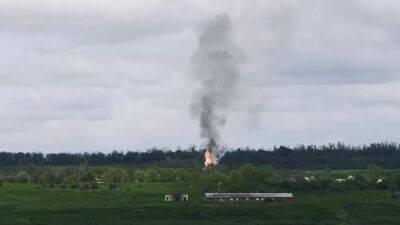Surviving Azovstal: Veterans of a defining battle tell Euronews their story
It’s been one year since the siege of the Azovstal steel plant in Mariupol, a bleak indication of what was to come in Ukraine.
This episode of Witness, Azovstal: The Defining Battle, is a rare account of what happened inside the steel plant’s tunnels, as well as whilst the soldiers were in Russian captivity.
For almost three months, thousands of Ukrainian forces – and civilians – took shelter in the plant’s network of tunnels and bunkers.
These captives became the focus of their country’s resistance, whilst Azovstal emerged as a symbol of both Moscow’s brutality and Kyiv’s ability to withstand it.
“We understood that the longer we held Azovstal and Mariupol, the longer a large part of the Russian army would be focused on us,” Oleg Karamov told me in December. The 30-year-old master sergeant retreated into the plant as the Russians sought to capture the city.
Oleg and his comrades from the 36th Marine Brigade were stationed in Mariupol since before the war. Days into the initial invasion of Ukraine in February, they were ordered to retreat to the village of Volonterivka and later to the Ilyicha metal plant, both located in Mariupol.
“We retreated tactfully. No one fled. [...] We took our wounded, we took our dead as far as possible.”, said Oleg Karamov.
The marines were supported by men from many other divisions such as the territorial defence or the police.
Oleg told me that half of them managed to leave before Mariupol was surrounded, whilst half of them stayed to fight.
"They did it voluntarily, no one forced them," he said.
When the Russians closed in, the only way out was through. In April, the brigade tried to escape, breaking through Russian lines to join the Azov regiment in Azovstal.
"The first line of troops went through






